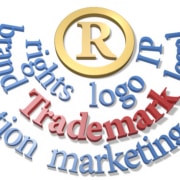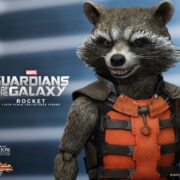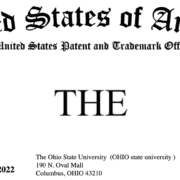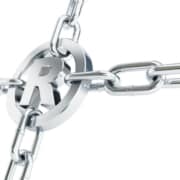BRANDING LESSON – Copying a famous mark could lead to an un-hoppy ending
Branding issues occur in almost every type of commercially available product or service. If you know me, you know that I am a HUGE fan of micro-brewed beers. Recently, I came across this one courtesy of my neighbors at High Score Saloon. Hop Tarts is a golden double IPA with a slight berry essence achieved by adding raspberries, blueberries & strawberries during fermentation. Sounds delicious, right? I hope to get a chance to try one soon!

U.S. Trademark No. 4,240,604
But I can’t help but wonder if DuClaw Brewing Co., which prides itself on “Taking Brewing Risks Since ’96” may have taken too big of a branding risk with this new brew. One look at the label on the hop tarts can brought back fond childhood memories of one of my favorite breakfast treats – Pop Tarts. Kellogg Corporation is the owner of several U.S. Trademarks associated with the Pop Tarts brand, including Registration No. 4,240,604 which is shown here. On it’s face, the Hop Tarts logo appears to be exactly the same as the registered Pop Tarts mark except that they substituted an “h” for the “p”.
Those of you that follow my blog may recall another post from a few months back – Damsel In Distress – How Choosing the Wrong Name Can Cost Your Company Big Time – about a similar situation where Maiden’s Brewery & Pub was accused of infringing on trademarks owned by the band Iron Maiden. (I know, another blog post about craft beer?) While there are certain similarities to that case, this situation raises some very different issues regarding trademark law.
Branding, Trademark Infringement and Likelihood of Confusion
Whether or not there is trademark infringement under U.S. law hinges on whether or not there is a “likelihood of confusion” as to the source of the products or services offered under the mark. The thirteen so-called DuPont factors determine whether there is a likelihood of confusion between marks and therefore infringement. Those factors are:
- The similarity or dissimilarity of the marks in their entireties as to appearance, sound, connotation, and commercial impression.
- The similarity or dissimilarity and nature of the goods . . . described in an application or registration or in connection with which a prior mark is in use.
- The similarity or dissimilarity of established, likely-to-continue trade channels.
- The conditions under which and buyers to whom sales are made, i.e. “impulse” vs. careful, sophisticated purchasing.
- The fame of the prior mark.
- The number and nature of similar marks in use on similar goods.
- The nature and extent of any actual confusion.
- The length of time during and the conditions under which there has been concurrent use without evidence of actual confusion.
- The variety of goods on which a mark is or is not used.
- The market interface between the applicant and the owner of a prior mark.
- The extent to which applicant has a right to exclude others from use of its mark on its goods.
- The extent of potential confusion.
- Any other established fact probative of the effect of use.
The first two factors – the similarity of the marks and the similarity of the goods or services – generally carry the most weight making a determination of infringement. Looking at the Hop Tarts case, as referenced above, the marks appear to be very similar in appearance. Looking at the second DuPont factor, however, presents a different picture. The goods protected by the Pop Tarts mark (toaster pastries) are very different from the goods to which the Hop Tarts mark is applied (craft beer). The trade channels of those goods also appear to differ significantly. Given those factors, it may be difficult for Kellogg’s to make a strong case for trademark infringement here.
Dillution of Famous Marks
However, there is another concept in trademark law known as dillution. Trademark dillution is the use of a mark or trade name in commerce sufficiently similar to a famous mark that by association reduces, or is likely to reduce, the public’s perception that the famous mark signifies something unique, singular or particular. Dilution is comprised of two principal harms: blurring and tarnishment. Blurring occurs when the distinctiveness of a famous mark is impaired by association with another similar mark or trade name. Tarnishment occurs when the reputation of a famous mark is harmed through association with another similar mark or trade name.
A “famous mark” is one that evokes an immediate connection in the minds of the consumers with a specific product or service and the source of that product or service. Examples of famous trademarks include APPLE, COCA-COLA, GOOGLE, MCDONALD’S and WALMART. Famous trademarks enjoy a broad scope of legal protection because they are more likely to be associated and remembered in the public’s mind.
According to Wikipedia, the Pop Tarts brand was introduced by Kellogg’s in 1964 and is one of their most popular brands with millions of units sold each year. In my opinion, Kellogg’s has a strong argument that it’s Pop Tarts mark qualifies as a “famous mark” and is subject to a higher level of protection than an ordinary mark. While some may consider use of their mark in connection with craft beer to be a tarnishment (not anyone that I would associate with, but there may be some out there), the stronger argument for Kellogg’s would be blurring – that their Pop Tarts mark is somehow impaired by association with the Hop Tarts brand. If Kellogg’s were to prevail in a suit against DuClaw for trademark dillution, they would be entitled to an injunction preventing DuClaw from further use of the Hop Tarts brand.
Do you have a new product or service that you are branding and want to ensure that you don’t make the same mistake? Before you hop to it, let us conduct a trademark clearance search to determine if there are any trademark issues with your brand. Contact us about your branding and trademark concerns before you hop into launching your new brand.









